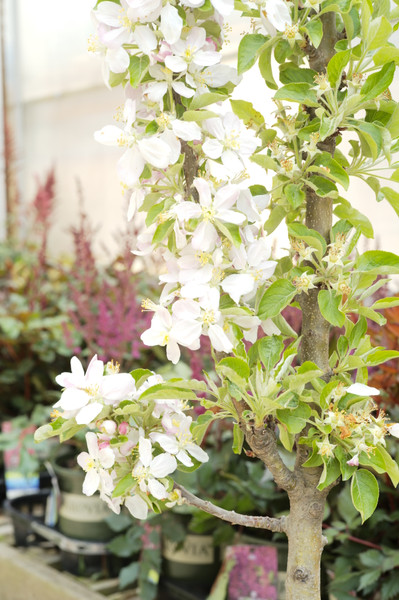Crabapple
Posted by Jessie Jacobson on May 7th 2024
Malus sylvestris (Crabapple)
Providing nectar for awakening bees, nothing is more fragrant and beautiful than flowering Crabapples in early spring. Crabapples are a member of the Rosaceae or rose family along with hundreds of other flowering plants. Native to North America and Asia, the Crabapple tree provides a food source for a variety of birds and small mammals. Its fruit can be made into jellies and ciders. They add vertical interest in a perennial bed or stand-alone beauty in the landscape. Each cultivar provides its own unique set of characteristics varying in color, size, and visual appeal.
When planting crabapples or any tree, it's important to consider the mature size. Height and width can range from 6 feet to 25 feet! Crabapple trees grow best in full sun but can tolerate partial shade. They like a damp, well-drained, slightly acidic soil. Apply a slow-release fertilizer such as Espoma's Organic Plant Tone in early spring for a needed boost.
Crabapples bloom in early May with colors ranging from red to pink to white. These attractive flowers call to pollinators with an intoxicating aroma and are equally appealing to us humans. Try cutting freshly budded branches to use in a cut flower arrangement. You won't be disappointed!
Spring flowers ripen into small fruits attractive to both birds and our small furry friends. Depending on who gets there first, some varieties are delicious for use in jams and jellies.
Newer cultivars of crabapples are resistant to common pests and diseases such as scab, fire blight, rust, and powdery mildew. An application of horticultural oil in early spring can help mitigate the risk of common fungal infections. Depending on your location, Japanese beetles start to munch late June and into July.
At Tonkadale, we carry many crabapple varieties including ‘Prairie-Fire’, ‘Royal Raindrops’, ‘Ruby Tears’, and ‘Tina’.
Happy planting and see you at Tonkadale.

